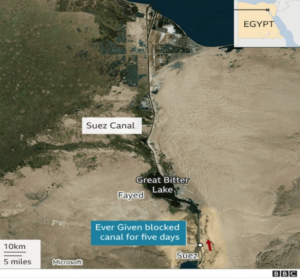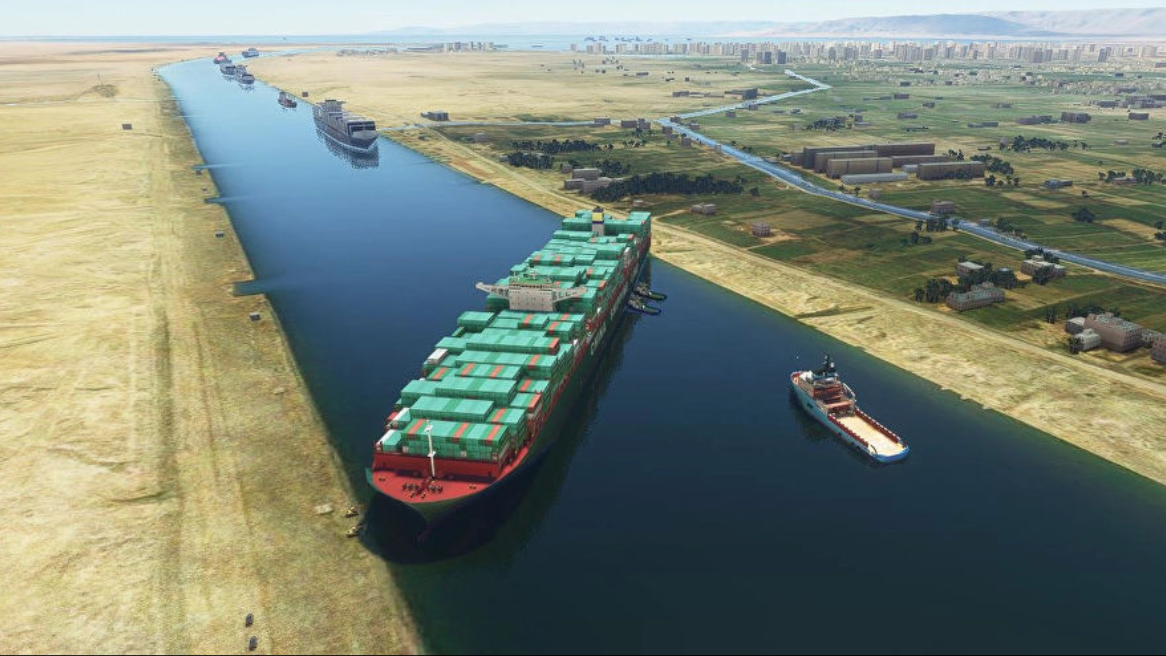Ever Given & The Suez Canal Conundrum
The grounding of the Ultra Large Container Ship (ULCS) Ever Given from March 23 – 29 March in the Suez Canal has predictably prompted a good deal of speculation related to the safety of vessels of this dimension and the circumstances surrounding the incident itself.
Some of the commentary has been factual and well informed but sadly, much of it has been wide of the mark.
A few facts:
- Since opening in 1869 Suez has been a remarkably reliable trade link between Asia and Europe but also more recently Asia to the United States East Coast. It is a hugely important source of revenue for Egypt at between $5.5-6.0 billion/year.
- The number of daily transits speak for themselves – around 50-55 ships/day representing between 10 and 15% of world trade spread over container ships, tankers, LNG carriers, auto carriers, bulk carriers, naval vessels and of course a few cruise ships.
- Suez has come under pressure with the expansion of the Panama Canal but also from fluctuating bunker prices which have resulted in deviations around the Cape of Good Hope. The Suez Canal Authority (SCA) has responded with a partial $8.4 billion 35km twinning of the central section of the Canal in 2014-15 to reduce transit times and has also offered a number of tariff incentives.
- Built is 2018, Ever Given is but one of around 130 container ships in the 18-24,000 TEU capacity range, almost exclusively trading between Asia and Europe via Suez.
- At the time of the grounding, she was under pilotage as vessel No.5 in the north bound convoy for that day. The transit of this convoy normally begins at around 5am.
- The weather forecast prior to transit was for southerly winds of 25-30 knots with the added potential for sandstorms.
Most observers would give recognition to the ports and supply chains that have done an amazing job in upgrading their infrastructure to meet the challenges posed by these vessels. We also have to give collective credit to the economic, efficiency and environmental gains that these vessels represent.
The situation at the time of writing is that the Suez Canal Authority (SCA) is seeking an out of court settlement for $1 billion to cover lost revenue and the costs associated with refloating the Ever Given and the SCA continues to hold the vessel as leverage.
The Japanese owners have filed suit for Limitation of Liability in the London High Court and also declared General Average meaning that every cargo owner will ultimately be asked to contribute towards the costs incurred prior to release of cargo.
A preliminary investigation is underway but ultimately there will be a formal investigation. The parties having a stake are:
- The Suez Canal Authority
- Classification Society for the vessel (American Bureau of Shipping)
- Flag State (Panama)
- UK P&I Club
- Japanese owners Shoei Kisen Kaisha (through a Panama registered subsidiary)
- Taiwanese Charterer (Evergreen)
- Japanese ship manager Higaki Sangyo Kaisha
- German Technical Manager (HK division of Bernard Schulte Shipmanagement)
- Indian Master, officers and crew
- Smit Salvage (Dutch)

In a marine accident investigation such as this, you can usually divide the gathering of information between generic standard procedure and that which can be considered specific to the accident.
The generic evidence will include:
- Examination of the ship’s black box (voice recorder, course recorder, engine log etc.)
- Examination of AIS tracking records.
- Statements collected from the pilots and vessel’s Master and crew.
- Records of recent pilot training and skill assessments and possibly also an examination of recent medical records. Some jurisdictions will also routinely test for impairment.
- There will usually consideration as to whether fatigue played any sort of role.
- Port State Control records – any non compliances.
Specific to this investigation:
- Bridge Resource Management (pre discussion between Master and pilots re-wind and forecast sandstorm activity)
- Weather experienced during transit.At the time of her grounding, Ever Given was reportedly experiencing wind speeds of 30 knots on her port quarter without tug escorts. The vessel was also experiencing reduced visibility due to the sandstorm.
- There is a maximum speed limit of 8 knots in the Canal. However, the ship was recorded as making 13 knots at the time of grounding which may have been necessary to maintain steerage in the prevailing high winds.
- An examination of the SCA Safety Management System
- Under what conditions are vessels required to take tug escorts in the Canal and has this been subject to any form of risk assessment?
- If escort tugs are used, are they tethered or untethered and where are they placed relative to the bow and stern – what level of bollard pull do they provide.
- It was reported that the two ULCV’s ahead of Ever Given, COSCO Galaxy (same dimensions as Ever Given) and Al Nasiryah (slightly smaller) had tug escorts so there may be an attempt to interview the Master and pilots of those vessels, also on the Maersk Denver a container ship which was immediately astern of the Ever Given.
- It is also reported that an LNG carrier had delayed her transit on account of the weather forecast so there may be an appetite to look further into the considerations that drove that decision.
- Max allowable LOA 400m unless special permission granted. Was this established through the results of a risk assessment and if so, what risks were identified and what considerations were given to mitigation of risks given that the width of the Canal even at surface level is 300m and it tapers with depth.
- There may be consideration to the 59m beam of the vessel versus the effective 200m width of the navigation channel at her draft of 14.5m.
- Finally, there may also be an analysis as to whether shallow water hydrodynamics and hydrodynamic bank effect contributed to the grounding.
On a final note, a number of observers have pointed to the option to sail between Asia and Europe via the Cape of Good Hope. This one is a bit close to home for me as my first trip to sea was the best part of a year on a tanker shuttling bunker oil from the Persian Gulf to South and West Africa in the aftermath of the 1967 6 Day War between Israel and its neighbours which closed Suez for 8 years. The bunker supply chain as it existed then is no longer in place. In fact, bunker supplies in South Africa have been tight for a number of years and the country’s ports are not well placed to manage an exponential sudden growth in demand even if today’s ships could access those ports – which for the most part they cannot.

